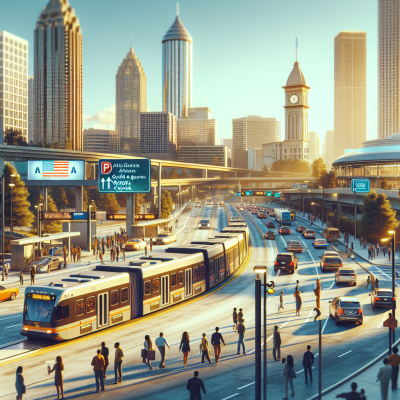
Transportation in Atlanta: A Comprehensive Guide for Visitors and Locals
Overview of Atlanta’s Transportation Landscape
Historical Background
Atlanta's transportation journey is deeply intertwined with its economic and social development. The city, founded in 1837 at the terminus of the Western and Atlantic Railroad, owes its existence and growth largely to the railroads. This legacy establishes Atlanta as a vital transportation hub in the southeastern United States. During the post-Civil War period, the expansion of railroads facilitated industrial growth, leading to Atlanta's prominence as a logistics and commercial center. The advent of the automobile in the early 20th century marked a significant shift in urban planning and transportation, spurring the development of the highways and interstates that today form the backbone of the city's road infrastructure.
Current Transportation Infrastructure
Atlanta’s transportation network is multifaceted, comprising a series of highways, rail lines, and public transit options. The Metropolitan Atlanta Rapid Transit Authority (MARTA) serves as the primary public transit system, operating both rail and bus services that connect the city and its suburbs. The MARTA rail system, with its four main lines, is integrated within the city’s broader transit infrastructure but remains limited compared to expansive metro networks in cities like New York or Chicago.
The city's road system is dominated by several major interstates, including I-20, I-75, I-85, and I-285, which form a network that facilitates regional connectivity. Hartsfield-Jackson Atlanta International Airport, one of the busiest airports globally, serves as a crucial node for both domestic and international travel, reinforcing Atlanta's status as a transportation hub.
In recent years, there has been a growing emphasis on enhancing pedestrian pathways and bicycle infrastructure to accommodate non-motorized transport. Initiatives such as the Atlanta BeltLine aim to improve the walkability of the city and create new transit options to support its growing population.
Transportation Challenges and Opportunities
Atlanta faces several transportation challenges, most notably traffic congestion and limited public transportation coverage. The city's rapid growth has outpaced some aspects of its infrastructure, leading to bottlenecks and long commute times, particularly during rush hours. Atlanta’s sprawling urban layout further complicates transportation planning and poses challenges for expanding public transit.
Despite these challenges, there are significant opportunities for improvement and innovation. Efforts to expand MARTA and invest in public transportation infrastructure are ongoing, with plans to extend service lines and increase connectivity throughout the metro area. Additionally, advancements in technology present opportunities to enhance transportation efficiency and accessibility. The rise of rideshare services, the potential introduction of autonomous vehicles, and investments in smart transport solutions could transform the way residents and visitors navigate the city.
Sustainability is another critical focus as Atlanta looks to reduce its carbon footprint and embrace green transportation options. Initiatives encouraging electric vehicle adoption, along with infrastructure improvements supporting cycling and walking, align with broader efforts to create a more sustainable and livable urban environment.
Thus, while Atlanta faces notable transportation challenges, ongoing developments and strategic planning are paving the way toward a more integrated and efficient transportation system that caters to the needs of both locals and visitors.








